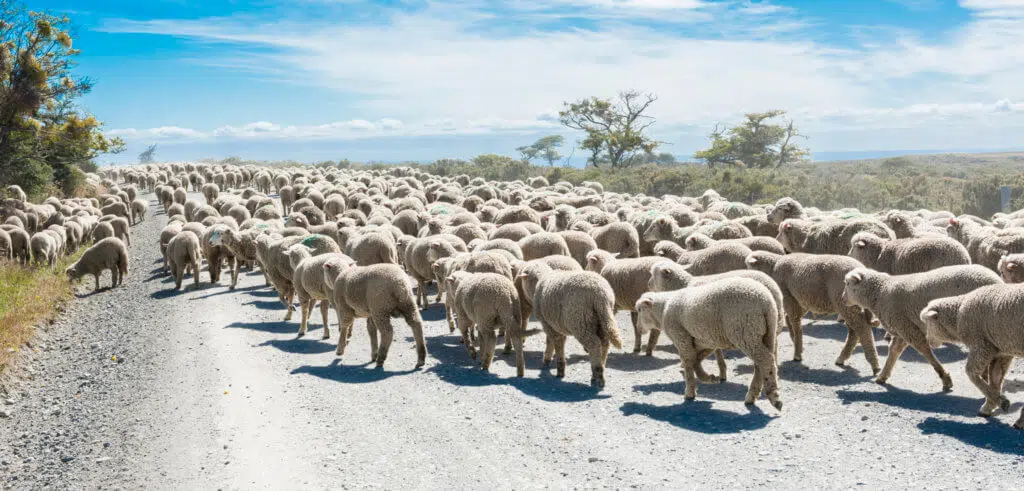Facing hoof problems in a sheep flock can be overwhelming. Producers are often left to sort out hoof problems on their own. This can be partially because cattle are difficult to treat and require the help of professional hoof trimmers who can help producers to identify hoof lesions, as well as perform proper trimming. With sheep being smaller and flocks bigger, it is often not worthwhile for professional hoof trimmers to work on sheep, leaving sheep producers in the dark when it comes to hoof problems. Perhaps it is time to revisit this issue and discuss the value of having a system to identify lameness in sheep.
Identifying the problem
Hoof problems are seen most frequently in the rainy season. This is because the wet ground causes hooves to soften and allow pathogens into the hoof more easily. Another major problem is when long hooves crack or break. Producers do not always have time to trim hooves, but the advantages of hoof trimming are so numerous that it cannot and should not be ignored any longer.
Another problem is the fact that for many producers, any hoof problems on the farm are lumped together as foot rot, without investigation and proper identification of the real cause. Isn’t it time for South African sheep producers to start using a locomotion scoring system in sheep to standardise the treatment of lame sheep? Lameness is identified as any deviation from the normal gait of an animal. In sheep, lameness can be caused by any of the following factors: genetic predisposition, season, farming system, housing conditions, poor hygiene, inappropriate hoof care, and nutrition. Furthermore, lameness can also be associated with bacterial infections and viral diseases. Common bacterial infections that cause lameness in sheep include interdigital phlegmon (true foot rot), ovine interdigital dermatitis (scald), and pedal joint abscesses. The most common viral diseases in South Africa that cause lameness are bluetongue and foot-and-mouth disease.
Lameness can also be caused by environmental factors such as the presence of ticks and poor hygiene in sleeping pens. Overfeeding may cause laminitis and underfeeding may lead to weak hoof structures. The list of causes can be discussed in detail, but it is outside the scope of this article.
Finding a solution
The solution may lie in using a combination of a lameness scoring system proposed for sheep in previous research and a system already in use in dairy and beef cattle. The system is easily implemented and practical to use on the farm. Once a sheep is identified as mildly lame, it should be inspected to identify the cause of lameness. The only limitation to this system is that the same person should do the lameness evaluation every time, as different people may be subjective in their assessment. As long as the same person scores the sheep every time, the incidence of hoof problems will improve in a flock through the use of this system. The earlier an animal can be identified as lame, the better the outcome of the treatment.
| Score | Clinical description | Description |
| 0 | Normal | Sheep bears weight evenly on all four feet and walks with an even rhythm. |
| 1 | Mildly lame | Steps are uneven, but it is not clear which limb or limbs are affected. Strides are shortened and the head drops slightly. |
| 2 | Moderately lame | Steps are uneven, the stride may be shortened, and the affected limb or limbs are identifiable. The head will show a slight bob when walking and the sheep’s back might be arched. |
| 3 | Severely lame | Mobility is severely compromised such that the sheep frequently stops walking or lies down due to obvious discomfort. The affected limb or limbs are clearly identifiable and may be held off the ground while walking or standing. The head will show bobbing while walking with an arched back. |
Conclusion
With the use of a lameness identification chart, the incidence and severity of sheep lameness can be reduced. Can we then afford not to start using a system like this to identify lameness in sheep in times when costs are high and margins are small? I think not.
Download the original articles as published in the May 2021 issues of Stockfarm (English) and Veeplaas (Afrikaans).
Anri Strauss is a scientific adviser in the ruminant team at Chemuniqué, holding a master’s degree in nutrition from the University of Pretoria. She grew up on a farm and still lives in the Free State, where she and her husband also farm with Boer goats.










